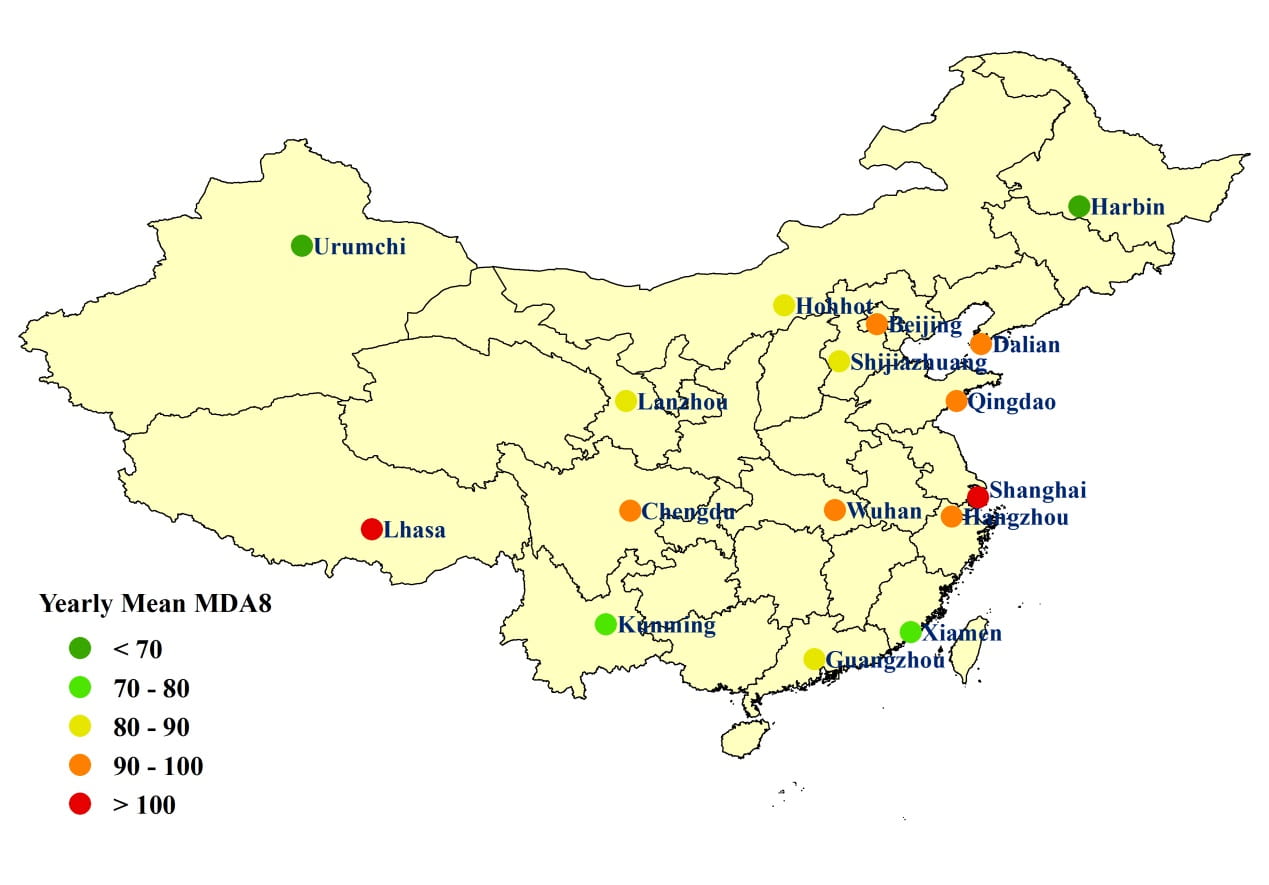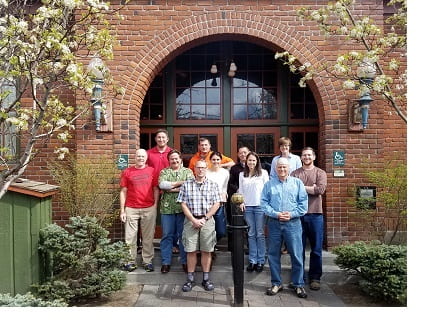When smoke gets in your eyes this summer, your thoughts are probably turning to wildfires. Wildfires are on nearly everyone’s mind these days in the Pacific Northwest because of the smoky haze and poor air quality that is blanketing our area. This August is similar to August 2017, and so you might wonder—why is this happening and is it going to continue? Those are the questions many reporters have been asking Dan Jaffe in the last few weeks.
A new paper by group members Crystal McClure and Dan Jaffe published in the Proceedings of the National Academy of Science addresses these questions. This research highlights the dramatic gains in air quality that have taken place in the last few decades around the country except in the Northwest. In this region, the 98th percentile of daily fine particulate matter (PM2.5), or in other words the seven worst air quality days each year, is getting worse. Around the US, there have been improvements in air quality from reduced power plant, industry, and automobile emissions, but in the Northwest, those reductions are outweighed by the emissions from wildfires. Learn more about this paper.
The indications are that the wildfire season will continue to get worse in the Northwest. Forest management practices and meteorological factors such as increased spring and summer temperatures, earlier snowmelt, and dryer forest conditions contribute to the current situation. “We want to be careful not to put it all on climate change, but climate change is clearly a contributing factor, and particularly in the size of these fires,” Dan Jaffe told E&E News. “A fire that used to become a small fire has now become a massive conflagration.” We will see more high fire years and, in general, longer fire seasons and bigger fires.
The increase in wildfires and smoky conditions causes adverse health effects. Wildfires are a major source of fine particulate matter, which is small enough to be inhaled deeply into the lungs. The health impacts of breathing smoke can be significant, especially for children, the elderly, and people with pulmonary, cardiovascular, and other chronic conditions.
To listen and watch interviews with Dan Jaffe about wildfires and air quality, visit:
- The Ron and Don Show, KIRO radio interview, August 22, 2018
- KUOW radio interview, August 9, 2018
- KIRO 7 TV interview, July 16, 2018
To read more, see:
- Breathing Fire: All This Smoke Means Smaller Newborns and More ER Visits, Climate Central, August 21, 2018
- Wildfires worsen extreme air pollution in U.S. northwest, Science News for Students, August 15, 2018—A great explanation of the issues, including a glossary, suitable for adults and students alike
- 114 Wildfires Are Scorching an Area Larger Than Delaware, Mother Jones, August 11, 2018
To see all news reports and articles about our research, see our In the News page.


 Datasets collected at Mt. Bachelor Observatory from 2004 to 2016 are now permanently archived and publicly available in the University of Washington ResearchWorks archive. The datasets include observations of ozone, carbon monoxide, mercury, nitrogen oxides, particulate matter and other atmospheric constituents. You can find the data by searching for Mt. Bachelor Observatory.
Datasets collected at Mt. Bachelor Observatory from 2004 to 2016 are now permanently archived and publicly available in the University of Washington ResearchWorks archive. The datasets include observations of ozone, carbon monoxide, mercury, nitrogen oxides, particulate matter and other atmospheric constituents. You can find the data by searching for Mt. Bachelor Observatory.